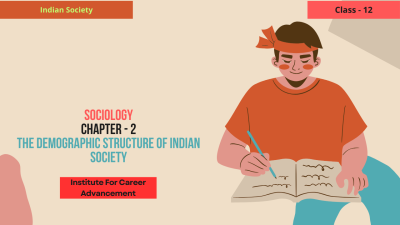Culture and Socialization - Class 11
Culture and Socialization is a crucial chapter in Class 11 Sociology, exploring the fundamental concepts of culture and the process of socialization. Key themes and concepts include: Culture: The shared beliefs, values, norms, and behaviors that characterize a particular group or society. Elements of Culture: The different components of culture, including material culture, nonmaterial culture, symbols, language, and beliefs. Cultural Diversity: The existence of multiple cultures within a society and the challenges and opportunities associated with cultural diversity. Socialization: The process through which individuals learn the norms, values, and behaviors of their culture. Agents of Socialization: The various agents that influence the socialization process, such as family, schools, peers, and the media. Socialization and Identity Formation: The role of socialization in shaping individuals' identities and sense of self. Culture and Social Change: The relationship between culture and social change, including the ways in which culture can both resist and promote change. By studying this chapter, students gain a deeper understanding of the role of culture in shaping societies and individuals, as well as the process of socialization and its impact on identity formation. সংস্কৃতি ও সামাজিকীকরণ একাদশ শ্রেণীর সমাজবিজ্ঞানের একটি গুরুত্বপূর্ণ অধ্যায়, যা সংস্কৃতির মৌলিক ধারণাগুলি এবং সামাজিকীকরণের প্রক্রিয়াটি অন্বেষণ করে। মূল বিষয় এবং ধারণাগুলির মধ্যে রয়েছেঃ সংস্কৃতিঃ একটি নির্দিষ্ট গোষ্ঠী বা সমাজকে চিহ্নিত করে এমন ভাগ করা বিশ্বাস, মূল্যবোধ, নিয়ম এবং আচরণ। সংস্কৃতির উপাদানঃ বস্তুগত সংস্কৃতি, অ-বস্তুগত সংস্কৃতি, প্রতীক, ভাষা এবং বিশ্বাস সহ সংস্কৃতির বিভিন্ন উপাদান। সাংস্কৃতিক বৈচিত্র্যঃ একটি সমাজের মধ্যে একাধিক সংস্কৃতির অস্তিত্ব এবং সাংস্কৃতিক বৈচিত্র্যের সাথে সম্পর্কিত চ্যালেঞ্জ ও সুযোগ। সামাজিকীকরণঃ সেই প্রক্রিয়া যার মাধ্যমে ব্যক্তিরা তাদের সংস্কৃতির নিয়ম, মূল্যবোধ এবং আচরণগুলি শিখতে পারে। সামাজিকীকরণের এজেন্টঃ বিভিন্ন এজেন্ট যা সামাজিকীকরণ প্রক্রিয়াকে প্রভাবিত করে, যেমন পরিবার, স্কুল, সমবয়সী এবং মিডিয়া। সামাজিকীকরণ এবং পরিচয় গঠনঃ ব্যক্তির পরিচয় এবং নিজের অনুভূতি গঠনে সামাজিকীকরণের ভূমিকা। সংস্কৃতি ও সামাজিক পরিবর্তনঃ সংস্কৃতি ও সামাজিক পরিবর্তনের মধ্যে সম্পর্ক, যার মধ্যে সংস্কৃতি পরিবর্তনকে প্রতিরোধ ও প্রচার করতে পারে। এই অধ্যায়টি অধ্যয়নের মাধ্যমে শিক্ষার্থীরা সমাজ ও ব্যক্তি গঠনে সংস্কৃতির ভূমিকা, পাশাপাশি সামাজিকীকরণের প্রক্রিয়া এবং পরিচয় গঠনে এর প্রভাব সম্পর্কে গভীর ধারণা অর্জন করে।
English
Last updated
Wed, 27-Nov-2024



















